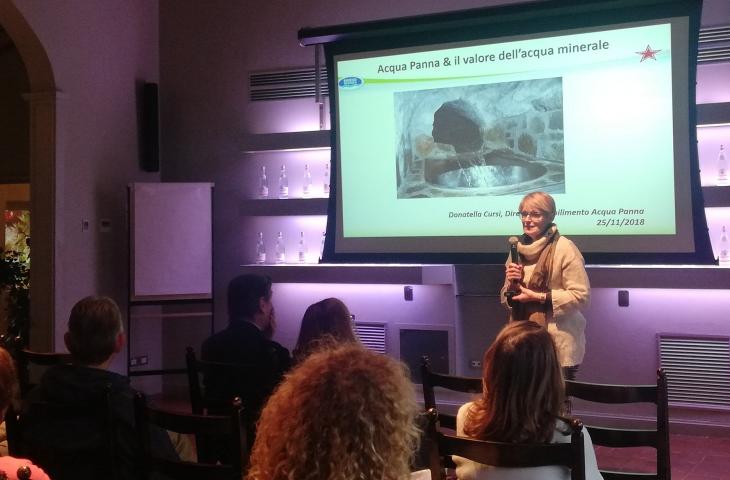MILAN – Open Factory, the initiative promoted by Italy post and L’Economia-Corriere della Sera, also joined by the the Sanpellegrino Group which opened the door to Acqua Panna to raise awareness of the value of mineral water. Among the speakers present at the exhibition was Donatella Cursi, director of the plant which bottles the water that brings a taste of Tuscany to the world.
The link between mineral water and the territory
The type of natural mineral water depends on the place of origin of the source and on the nature of the groundwater. It acquires mineral salts and trace elements from the rocks during a long underground journey that can last decades.
Mineral salts and trace elements are the fingerprint of mineral water. Mineral waters may be similar but no water is identical to another because the wide variety of rocks and geological structures determine the conditions for the formation of different mineral waters depending on the characteristics of the territories in which they flow.
Groundwater in Italy
The chemical composition of mineral water is therefore linked to the characteristics of the rock that forms the groundwater.
The characteristics of the rocks, or in other words the groundwater, also affect the uptake: groundwater in sedimentary rocks - as in the case of Acqua Panna - is not very permeable and requires numerous springs. Conversely, groundwater in limestone or dolomitic rocks - as in the case of S.Pellegrino and Nestlé Vera mineral waters, the source of San Giorgio in Bosco - has high permeability and the mineral water can flow from a few sources.
Acqua Panna and the protection of a unique natural environment
Turning to the specific case of Acqua Panna, its history is inextricably linked to the territory in which it was born. The plant is located 35 km north of Florence, in the Tuscan-Emilian Apennines on the slopes of Monte Gazzarro (1,125 m). The springs are located within an estate that covers an area of over 1,300 hectares.
The estate was bought by the Medicis who turned it into a pristine hunting reserve and officially delimited its borders with a deed dated 1564. Forest conservation works are still conducted on the reserve to protect the rich flora and fauna of the area. The territory is prohibited from any human activity and the entire area is monitored to ensure that no human activity is carried out in the licensed mining area.
Finally, a sophisticated computerised system is able to carry out the protection of the source area, the control of the microclimate and of the chemical-physical parameters of the mineral water.
by Prisca Peroni
12, 4 - 2018











